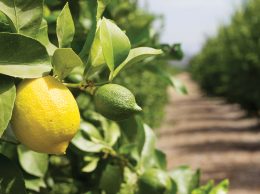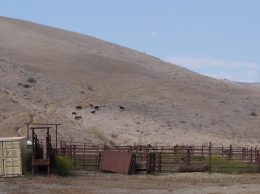A study by the California Department of Food and Agriculture and researchers at UC Davis estimates that agriculture across the state may see as much as $1 billion lost in gross revenue through 2015 as the drought continues and groundwater supplies are further depleted.
“The 2015 drought is not as severe as initially anticipated, but worse than 2014 in terms of reduced water availability and economic impact to agriculture,” the study reports.
Compiled by UC Davis researchers and Davis-based ERA Economics, the study estimates growers statewide can expect to lose about $856 million in gross crop revenue by the end of the year while dairies and livestock are expected to lose another $350 million. This equates to about 18,600 full-time and part-time jobs lost and a total cutback of about 564,000 acres.
There’s also expected to be about an 8.7 million acre-feet reduction in surface water across the state, the study says, even as agricultural producers have looked to alternatives such as quickly depleting groundwater, water market transfers and limited use of water for more water-intensive crops.
Despite a record-setting drought, agriculture across Santa Barbara County increased in value by about 3.7 percent in 2014, rising to more than $1.4 billion in total value, while cattle ranchers saw the greatest losses.
Strawberries again brought in the highest total crop value, at roughly $464 million, which included a slight loss of about $2,527 from the year before.
Even as processed strawberries saw a 16 percent increase in value, total acreage was reduced by about 7 percent.
Meanwhile, wine grapes again came in as the No. 2 highest value crop and even saw increases in harvest acreage and production.
The crop’s value, however, did not fare as well. Grapes brought in about $155 million for 2014, marking a 5 percent reduction of about $8.1 million from the year before.
Like wine grape growers, cattle ranchers also faced multimillion-dollar reductions in annual total value. With ranchers forced to reduce their herds by 40 to 50 percent in 2014, the cattle and livestock industry in Santa Barbara County saw a roughly $9.6 million reduction in value.
The total value for 2014 was $23 million, and the county crop report points to the drought, lack of available grass for grazing and the high costs of supplemental feed as the biggest issues ranchers faced last year.
Oxnard getting farmer’s market
Oxnard’s newest and biggest shopping center will soon welcome its very own farmer’s market.
The Collection at RiverPark will introduce its first weekly farmer’s market on June 18 and the market is expected to run from 4 to 8 p.m. every Thursday on Park View Court.
Joined by stores such as Target and Whole Foods in the shopping center, the market will feature fresh produce from local farmers, prepared and prepackaged artisanal foods, flower vendors and hand-crafted goods, along with live music and face painting.
The market is being held through a partnership with California Certified Farmers Markets and the nonprofit Raw Inspiration.
Calavo Growers beats projections
Carpinteria-based Calavo Growers beat Wall Street projections on June 2 with a fiscal second-quarter net income of $8.5 million.
The produce company reported it had net income of 49 cents per share, passing analysts’ estimates of 48 cents, and its revenue for the quarter was $221.6 million. With this newest release, Calavo shares have climbed by nearly 6 percent since the start of the year while the stock has gone up by about 60 percent in the last 12 months.
State’s rural roads dangerous
A report by the national transportation research group TRIP has found that California has some of the most dangerous rural roads in the country.
California’s rural roads near agricultural areas are the sixth most dangerous in the United States, according to a TRIP report.
Fatalities and crashes on these roads occur at a rate that’s higher than it is for rural roads in more than 80 percent of the country.
In fact, rural California roads experience four times as many traffic-related deaths and crashes as all other roads in California.
In 2013, non-interstate rural roads in California experienced 2.83 deaths for every 100 million vehicle miles of travel, or VTM, while all other roads held a fatality rate of 0.67 deaths per 100 million VMT.






 Print
Print Email
Email

















